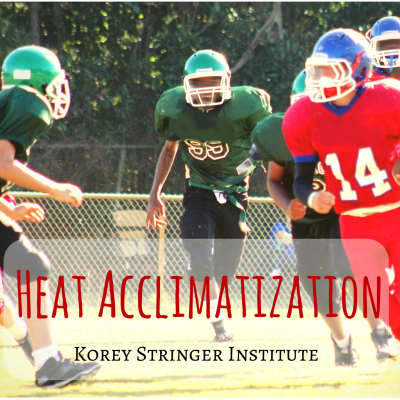By Elizabeth Adams, Assistant Director of Elite Athlete Health and Performance
Strenuous physical activity in hot, humid environments places individuals at great risk for heat-related illnesses and exertional heat stroke. Annually, many individuals, such as athletes, occupational workers, and soldiers suffer from these conditions. Heat acclimatization is, perhaps, the most effective way to mitigate these exertional heat illnesses, as well as improve performance in the heat.
What is heat acclimatization?
The improved ability to exercise in a hot environment due to physiological adaptations that occur over a period (10-14 days) of repeated exposures to exercise-heat stress.
Physiological adaptations of heat acclimatization:
- Improved cardiovascular function
- Increased plasma volume
- Increased stroke volume
- Decreased heart rate
- Improved ability to dissipate heat
- Increased sweat rate
- Earlier onset of sweat
- Decreased concentration of NaCl in sweat
- Overall, these adaptations lead to a decreased core body temperature during exercise.
What we know #1:
- Many heat illnesses occur on the day after a long, novel heat stress. For example, day 2 of preseason football practice following a day 1 two-a-day practice.
What we do not know #1:
- What is the driving physiological mechanism?
- Does heat acclimatization help to prevent this occurrence?
What we know #2:
- Heat acclimatization adaptations are transient and will disappear in 1-3 weeks if heat exposure is not maintained.
What we do not know #2:
- Does an intermittent heat exposure intervention help to mitigate heat acclimation decay and thus maintain adaptations?
What we know #3:
- Body cooling during exercise in the heat helps to mitigate rise in core body temperature.
What we do not know #3:
- How does heat acclimatization effect cooling rate during and after exercise?
Recently, our research team has completed a large heat acclimatization study in order to answer these unknown questions. Our hope is to further the scientific knowledge and provide a more comprehensive understanding of heat acclimatization, with the ultimate goal of keeping all athletes safe.
Stay tuned and follow us on social media for news of when results are published!
